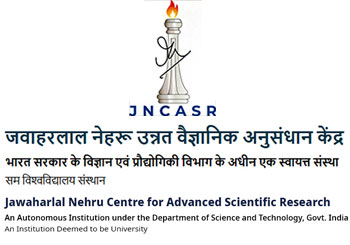TSU COLLOQUIUM
TSU COLLOQUIUM
Speaker: Dr. Debdas Dhabal
Affiliation: Department of Chemistry, University of Utah, USA
Title: Elucidating the Formation Mechanism of Zeolites
Date and Time: 20th January 2023 (Friday) at 11:00 AM (Coffee/Tea: 10:45 AM)
Venue: Nevill Mott Hall
Abstract:
[PDF file enclosed]
Zeolites are crystalline porous silicates or aluminosilicates most widely used in the catalytic and detergent industry [1]. Ultrasmall few-unit-cell nanozeolites with controlled size and connectivity of the pores are gaining attention because of their superior performance as catalysts, adsorbents, and in membranes. Even though about 300,000 zeolite frameworks have been proposed, only ~235 have been synthesized. In order to acknowledge this limitation and design new zeolites with controlled pores, an understanding of the molecular mechanism by which the zeolites form is important.
Typically, zeolites are synthesized by the hydrothermal method, which is a multi-stage process that involves multiple phase transformations mediated by the chemistry of polymerization of silica. Organic cations, typically tetraalkylammonium ions, are used to direct the synthesis toward specific zeolite polymorphs. The interplay between chemistry and phase transition makes it very challenging to investigate the molecular mechanism of zeolite formation in experiments and in simulations.
In this talk, I will present our recent progress using molecular simulation, nucleation theory, and thermodynamics to address the following questions: What is the molecular mechanism of the formation of zeolites? Does it follow a classical or nonclassical pathway? At which stage does the polymorph selection occur? [2-4] and finally, what is the smallest zeolite that could be synthesized at the temperature of hydrothermal synthesis? [5] The answers to these questions would help experimentalists in designing better synthesis strategies to produce zeolites with superior properties.
References:
- Corma, A., Chem. Rev. 97, 2373, (1997).
- Dhabal, D.; Bertolazzo, A. A. and Molinero, V., J. Phys. Chem. C., 125, 26857-26868, (2021).
- Bertolazzo, A. A.; Dhabal, D. and Molinero V., J. Phys. Chem. Lett., 13, 977–981 (2022) #equal contribution.
- Banik, S.; Dhabal, D.; Henry, C.; Manna, S.; Cherukara, M.; Molinero V. and Sankaranarayanan, KRS S. npj Comp. Mat. (Accepted) (2022).
- Dhabal, D.; Bertolazzo, A. A. and Molinero, V., Angew. Chem. Int. Ed. 61, e202205095 (2022) (Hot paper).
Host: Prof. Subir Das
- Back to previous page
- |
-
Page last updated date:11-03-2025 05:37 PM























